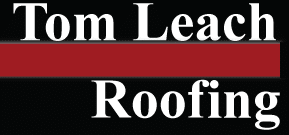Your roof is the most important part of your home. It keeps the interior of your house secure and keeps you dry during our Portland rain storms. Visual inspections and periodic professional roof inspections can keep that roof over your head and keep you – and your home – safe. Here are five actions you can take to identify roof damage:
Portland rain storms. Visual inspections and periodic professional roof inspections can keep that roof over your head and keep you – and your home – safe. Here are five actions you can take to identify roof damage:
1. Take a look at your eaves. Get under the eaves of your home and take a look. Do they leak? Are they rotted? Is the paint pealing? Are the gutters sagging or detaching? If the answer to any of these questions is “YES,” you need to consult with a roofer. Be aware that the damage may be localized to your eaves only, or you may have a bigger problem with your roof in general.
2. Check the interior of your attic. These spring rains are the perfect time for you to check for leaks in the attic. After a day of rain, examine your attic. Is the insulation wet? Are there water stains in your attic? Does the brick of your chimney have white discoloration? Are there puddles on the ground or on your stored items? If so, it’s time to talk to a roofer.
3. Examine your roof from the ground. Get a pair of binoculars or a camera with a good zoom lens and take a look at your roof from every angle you possibly can. You’re looking for:
– Pealing, missing, gouged or discolored shingles
– Piles of debris
– Rusted, discolored or peeling flashing
– Puddles of water
– Moss or other plants growing on your roof
These all indicate roof damage.
4. Get a closer look with a ladder. Take a dry day to look at your roof from a ladder. This will allow you to get a closer look at each portion of the roof. Be sure your ladder is solidly placed and you are wearing rubber-soled shoes. Climb up and check for any of the problem spots noted in #3.
5. Get onto the roof and examine everything. Be sure that you take any and all safety measures before getting onto the roof. These include (but are not limited to) wearing rubber soled shoes, picking a dry day, making sure your roof pitch is manageable, and having a buddy on the ground.
Check for all of the problems listed in #3. While on the roof you can also check areas of suspected damage by touching it and seeing if it is “soft” or appears to “give” beneath you.
If you suspect that your roof is unstable or has dangerous spots, call a professional for an inspection. Many local roofing companies will take a look at your roof for you in order to give you a free estimate.
No matter how much of an inspection you do, be sure to get roof damage fixed as soon as possible.
